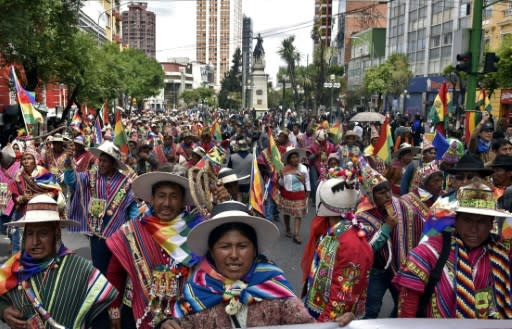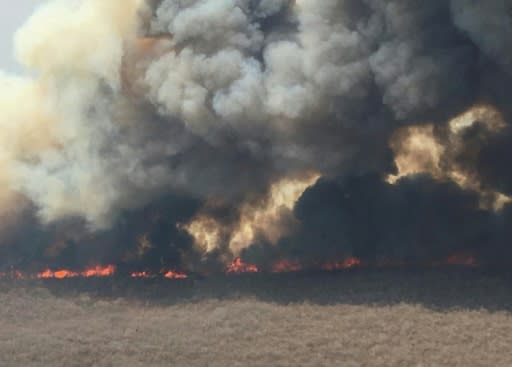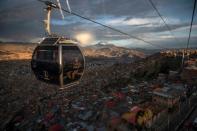Bolivia: Turmoil in Latin America's indigenous heartland
Landlocked Bolivia, in crisis after its president quit amid protests over a disputed election, is among Latin America's poorest countries despite having huge gas reserves. It is home to the region's largest indigenous population. Here are some key facts about the country of 11 million people: - First indigenous president - Evo Morales became the first indigenous president of Bolivia in 2006 after a landmark election victory broke decades of domination by an elite largely of European or mixed descent. Morales, a member of the Aymara indigenous community, steered through a new constitution aiming to bolster the rights and living conditions of indigenous people, where 62 percent of the population hail from indigenous groups. Around 36 indigenous languages are officially recognised -- including Quechua, Aymara and Guarani -- along with an indigenous legal system different to state law. - Political instability - Morales had been the region's longest-serving leader, credited with bringing relative stability to a volatile country. The one-time coca farmer from the Movement for Socialism (MAS) party was reelected in 2009 and 2014 with more than 60 percent of the vote. After election on October 20, 2019, the electoral authorities once again declared Morales the winner with 47 percent of ballots. But the result was disputed, leading to weeks of protests in which three people were killed and more than 250 injured. Lawmakers are now set to choose an interim president, with Morales heading into exile in Mexico. Bolivia has a history of political instability. Since independence in 1825, there have been about 200 coups or attempted coups. Between 1978 and 1982, there were nine different governments. - Nationalized economy - Bolivia's economic growth has outstripped most of its regional neighbours, reaching 4.2 percent in 2018 according to the World Bank. Morales nationalized the gas and oil sectors, boosting government revenue from the industries from $673 million in 2005 to $2.28 billion in 2018. The state also controls telecommunications, pensions, hydroelectric power stations, airports and mining, using much of the money to fund social programmes and public infrastructure. Morales increased the minimum wage several times. - Mineral-rich but poor - While still among the poorest countries in Latin America, Bolivia's poverty rate decreased from 45 percent of the population in 2010 to 35 percent in 2018, according to the World Bank. It sits on the region's second-largest gas reserves -- after Venezuela -- and the world's largest reserves of lithium. The country has courted foreign investment, particularly from China, to help exploit its resources, aiming to become the world's fourth-largest producer of lithium by 2021. Bolivia is the world's third biggest cultivator of coca -- which can be used to produce cocaine -- after Colombia and Peru, according to the UN. - Landlocked and forested - Bolivia lost its prized route to the Pacific Ocean in a 19th century war with Chile and now sits landlocked, bordered by Brazil, Paraguay, Argentina, Chile and Peru. In 2018 the UN's International Court of Justice rejected its bid to regain access to the coast. La Paz is the highest capital city in the world, at 3,900 metres (12,800 feet) above sea level, and the Andes mountain range covers a third of Bolivian territory. About half of the land area is forested, most of it Amazon equatorial rainforest. Weeks of fires from August to October this year ravaged more than four million hectares (10 million acres) of forest and grassland, killing more than two million wild animals including jaguars and llamas. A disputed election result has led to weeks of protests in which three people have been killed Evo Morales was the region's longest-serving leader until he resigned on November 10 Morales supporters came out in his defence after the election, demanding the opposition respect the initial result La Paz is the highest capital city in the world and the Andes mountain range covers a third of Bolivian territory Weeks of fires this year ravaged more than four million hectares of forest and grassland











